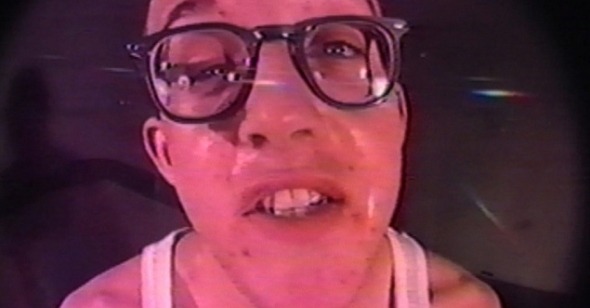Running Wild
by Michael Joshua Rowin
The Universe of Keith Haring
Dir. Christina Clausen, U.S., Arthouse Films
The best compliment that can be paid The Universe of Keith Haring, a straightforward, fast-moving documentary about the Pennsylvania phenom who made his way from New York City bohemia to the art world and transcended all to become one of the most recognizable names in popular graphics in the late 20th century, is that it is as inspiring at the level of a cinematic portrait as its subject was at the level of pure creation. As directed by newcomer Christina Clausen, the film looks to Haring as an artistic role model for his preternatural talent, of course, but also for his infectious lust for life that had him as committed to social activism and teaching children as to his latest painting.
For Haring, the world was a canvas. He is unique even among pop artists for seeing in everything—subways, cars, people—a potential surface for his bubbly cartoons of dancing, colliding, and frolicking figures (the most famous being his “Radiant Baby” character), a match between the motion of his message and the form of his expanded media that erased contrived boundaries dividing art as commodity from art as living and improvisational public presence. Clausen evokes Haring’s restless, ebullient spirit by tracing the artist’s life and times at a rapid but manageable pace, countering his insanely prolific output and growth by making Universe’s structure and style—aside from zoom-ins on the eyes of interviewees as they are introduced to the viewer—at the service of a suitably conventional presentation.
Haring grew up in Kutztown, PA, a small, sleepy town that couldn’t contain his ambitions for long. After commercial art school in Pittsburgh and the School of Visual Arts in Manhattan, Haring exploded onto the scene by virtue of his public drawings and graffiti, which were based on an influential street culture that saw no difference between art and life. Since the gentle but outgoing Haring was a permanent fixture in the 1980s art and gay scenes, Caulsen’s film contains a wealth of archival footage that brings the viewer into the vibrant world of pre-Guiliani New York, including early footage of Madonna (whose back-to-bohemia directorial debut, Filth and Wisdom, could be considered an unofficial companion piece to this documentary) performing at Haring’s “Party of Life.”
Along with intimate glimpses into his character given by family members and friends, Universe contains interviews with Fab 5 Freddy, David LaChapelle, and Yoko Ono, among others, all on camera to testify to Haring’s genius and exponentially developing aspirations that found fulfillment in ever larger murals, sculptures, and other projects, including the Pop Shop, a store that sold mass-produced buttons, shirts, and other knick knacks featuring his art work. What made Haring a visionary was not his marketing savvy (though that was a bonus gift picked up from the “King” himself, Andy Warhol), but his work’s demonstration that art could be daring, fun, and accessible, all at once. Which makes it all the more tragic that Haring died of AIDS at the age of 31 in 1990. There’s not a lot of drama in Universe, but when the end comes it’s devastating, leaving only the memory and muse of Haring to keep alive the monumental body of work that was only just begun.
